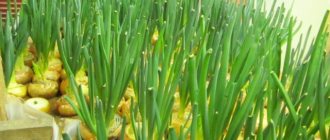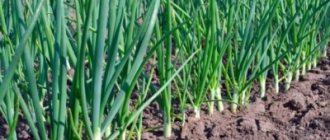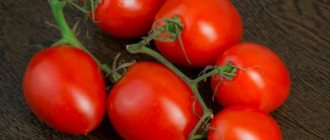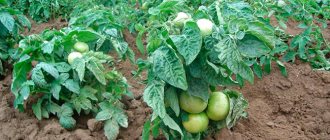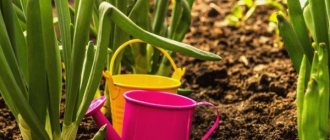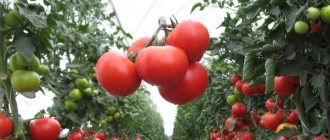Any fresh greens are especially popular in winter and spring, when gardens are still covered with snow, and not everyone has heated greenhouses. True, if we talk about forcing onions, then onion varieties are least suitable for winter, since they require more heat and light than their perennial varieties. Planting onions in the spring on greenery in a greenhouse is more justified, since it often allows you to do without additional heating and lighting and ultimately get much better results in terms of yield.
Features of growing onions in a greenhouse
For normal and fruitful forcing of onions, two basic conditions are vital: temperature and light. Of course, the humidity and quality of the soil also play a role, as well as the quality indicators of the seed material, but the latter will be discussed in detail in the next chapter.
Forcing onions into feathers can occur at temperatures from + 8 ° C to + 25 ° C. At the time of planting, it is desirable that the temperature be within + 18-22 ° C. Of course, in the middle zone in a greenhouse such a temperature can only form during the daytime. At night you will most likely need to use additional heating. To maintain heat at night, it is important to pay attention to good thermal insulation of the greenhouse. This issue should be taken into account at the stage of its construction, so as not to skimp too much on the thickness of the greenhouse covering material.
To simplify your task, it is advisable to use racks or special tables raised above the ground for planting onions. After all, the air in greenhouses warms up much faster than the soil below, and this will reduce heat costs for heating. In addition, racks can provide an increase in planting area if they are made in two or even three tiers.
In the first 8-12 days after planting, onions practically do not need light, and then 12 hours of daylight is enough for good development. A similar level of lighting can be provided without installing additional lamps if the onions are planted no earlier than the beginning of March.
To successfully force onions into feathers, the air in the greenhouse should not stagnate, and the air humidity inside should not be too high. These factors together have a depressing effect on the growth of greenery and can lead to various unpredictable diseases. To reduce humidity, you can adjust the temperature (lower it). You can use a regular household fan to circulate air, and in warm weather, be sure to ventilate the greenhouse.
Watering onions grown for harvest is vital only at the very beginning of the process, after planting. Then a lot depends on the temperature and conditions that will be in the greenhouse.
Lighting
You definitely need to worry about the light in the greenhouse. In winter, daylight hours are short, so artificial lighting is indispensable. But you don't have to worry about this too much because these plants won't need light 24 hours a day. It is necessary to ensure that there is at least 12 hours of daylight. This means that artificial lighting will only be used for 6-7 hours. Particular attention should be paid 12-14 days after planting, when feathers begin to develop. Otherwise, development will slow down, the feather will not only be elongated, but will not gain the required green color and will turn out to be light green. To achieve good results, a large dose of light will be needed during the last week before harvest.
It is important to choose the right spectrum of lighting for growing onions in winter. It is best to choose fluorescent lamps with a blue spectrum. For this purpose, linear metal halide lamps are usually used.
However, among amateur gardeners, there is successful experience of growing onions in a greenhouse in winter without the use of artificial lighting. Denis Ulyanov, who has been forcing onions for several years, shares his experience:
The best varieties of onions for greens for growing in a greenhouse
If growing onions for harvest is one of the means of income, then choosing the most suitable variety is the basis for possible profitability. You should choose from those varieties that will be either multi-lobed or multi-primed. There are several varieties that are most advantageous to use for forcing in greenhouses.
Karatalsky
One of the best varieties for growing in greenhouses as a feather, since it is both multi-primed and multi-nestled. In addition, he has a very short rest period and is able to wake up early. Having planted it, you can always be confident not only in the quality of the harvest, but also in the early stages of its receipt.
Rostov local (Lugansk)
Local Rostov onion also shows good results when grown for feathers. It has at least three primordia and is characterized by an average dormant period. This variety has another remarkable property - the impressive fleshiness of the feather. When planting large bulbs with a diameter of more than 5 cm, the harvest can be more than decent - up to 15-18 kg per 1 sq. m.
Stuttgarter Riesen
Although this onion has a long dormant period, it is ideal for forcing greens in a greenhouse in the spring. More than three rudiments can always be found in it, and it forms a powerful, beautiful and healthy feather. Plus, it's pretty easy to get. The variety is well known and is found almost everywhere.
Egyptian
This is a rather conventional name for onions for growing onions. Since it is of imported origin, it may not be too easy to obtain. But it has many buds and grows well.
Chalcedony
Although this onion usually has no more than 2-3 rudiments, it is distinguished by its unpretentiousness and good growth, and most importantly, it is found everywhere. It will not be particularly difficult to find its seeds for planting. The Bessonovsky Urogony, Danilovsky 301 and Strigunovsky Local varieties have approximately the same properties.
Relevance of the onion business
Onions are considered the most popular product. Agree, all dishes contain onions (except for desserts, of course) and without them they do not taste the best. In addition, onions are very beneficial for health. Therefore, onions can be found in every home at any time of the year. Even if other vegetables can be replaced with something, this will not work with onions and replacing it with, for example, garlic will not work.
Growing onions is a great business idea
This is probably why growing onions is considered a profitable business. In addition, onions are not fussy and can be grown all year round. Also, no matter what variety you grow, it will still produce feathers. In summer they are not so popular and are very cheap, but in cold weather the price of green onions increases several times. The main thing is to take proper care of your cultivated crop so that the feathers look decent and have a bright and rich taste, just like in summer.
If we talk about the relevance of growing onions, hardly anyone will have any doubts about this. As we said above, onions are valued always and everywhere. Every year it is produced in huge quantities for further sale. In just a few months you will be able to join the business, set it up, study the market and find several sales channels where you will sell your product.
Selling onions is a profitable business
In such a case, the main thing will be the correct organization of the sale. Don't think that you will find a buyer yourself. Think about what you will have to go through before you have your first regular customers. By the way, you will have to look for them yourself. Maybe in the future people will contact you, but initially you must introduce yourself so that people know what you do and who to contact in such situations.
People who have fully integrated and adapted into such a business produce onions all year round: in the summer they grow them in open areas, in vegetable gardens, in the winter - in greenhouses.
Preparation of soil and planting material
Onions can be planted both on a soil substrate, the basis of which is ordinary garden soil, and on artificially created soil, the basis of which is sawdust. For beginners in this business, it is advisable to use ordinary soil, which is located in the greenhouse. You just need to mix it with humus or compost in the fall, adding a bucket of these components per 1 square meter. m. soil.
You can even grow onions for harvest in boxes placed on the surfaces of shelving. In this case, the thickness of the soil layer in them is approximately 5-6 cm. If the boxes are sealed or covered with plastic film, then it is imperative to provide drainage holes in them to drain excess liquid when watering. Otherwise, the bulbs may simply rot from excess moisture.
Preparing the onion itself involves several procedures. To begin with, before planting, the onion must be placed in a warm room for several days and allowed to warm up. After all, onions are usually stored at a temperature of about + 5 ° C so that they do not germinate.
Then the bulbs need to be sorted by size. For forcing, you can use bulbs with a diameter of 3 to 8 cm. Larger bulbs may no longer give the expected effect of increasing the yield, and smaller ones will form feathers that are too thin and weak.
It is best to have bulbs of approximately the same size in the box. In this case, germination will be more uniform. To speed up the process, as well as for more beautiful and uniform germination of the feathers, the necks of each bulb are cut off, leaving approximately ¾ of the bulb itself.
No less important is the soaking procedure. In extreme cases, you can do without it, but it significantly speeds up the germination process and, most importantly, disinfects the planting material. Onions are usually soaked directly in bags in warm water at a temperature of + 50 ° C with the addition of potassium permanganate.
Attention! The soaking period can range from several hours to a day.
Sales organization
The hope for a quick sale of goods is always present for a beginning farmer, however, it is actually somewhat different, for several reasons:
- in the off-season and winter, inflated prices scare away buyers, and the goods quickly deteriorate;
- Buy no more than 3 bunches of greens at a time.
It will not be possible to sell a ton of onions at once and immediately receive income , so in a business plan it is important to immediately think through sales lines and find regular buyers. Some options for selling products:
- Sales to wholesalers. In almost every region there are wholesalers to whom you can sell your harvest.
- Searching for buyers through online advertisements.
- Offering goods to catering establishments and cafes. Here you will have to use the gift of persuasion and be able to adequately present your product.
- Sales through grocery stores and supermarkets.
- Independent sale.
Important! If you sell it yourself, there may be large costs for hiring salespeople, renting a retail outlet, and transporting the goods.
Planting onions on greens in a greenhouse
Planting onions on feathers in greenhouses can theoretically be done both with the help of ready-made bulbs and with seeds - the so-called nigella.
Seeds
This method is incredibly labor-intensive and time-consuming. Therefore, it is suitable only for those who do not have the funds to buy ready-made bulbs for planting in the required quantity, but who have a lot of free time and a desire to tinker with onion seedlings.
In this case, usually in the spring, onion seeds of a suitable variety are sown in boxes and the seedlings are cared for for a whole year until next spring. In the summer they are planted more freely, so that by late autumn they can turn into bulbs of more or less decent size. Then they are dug up and stored in a cold place until spring, when they can be planted in the usual way, which will be described below.
Bulbs
When growing feathers from bulbs in greenhouses, the bridge planting method is most often used. In this case, per 1 sq. m. usually spend about 25-30 kg of finished bulbs. This amount is approximately one standard mesh bag of onions.
How to plant onion sets on greens in a greenhouse
With the bridge method, pre-prepared bulbs are planted almost on the surface of the ground with the cut side up, deepening them only 1 cm. Moreover, the planting density should be such that almost all the bulbs are in contact with all their parts with each other. The bulbs, figuratively speaking, line a bridge, hence the name of this planting method. Thus, a large amount of space is saved, which is especially important for small areas in compact greenhouses.
When landing for the first time, it can take quite a long time. With gaining experience in landing 1 sq. m. in this way should take no more than 30 minutes for one person.
Attention! After planting, the onions are thoroughly watered and left in this form until the first sprouts of greenery appear.
Harvesting
The harvest period depends on the onion variety and the conditions created in the greenhouse. Usually it takes 4 to 6 weeks after planting until this point. Leaves 25-40 cm long (from ground level) are ready for sale and consumption. Greens of 50 cm are considered non-commercial.
Cleaning is carried out in the following way:
- The onion is cut at the root with a knife.
- Cut off the bottom.
- Hold the onion with one hand, and pull out the feather with the other.
- Remove the transparent film from the white part.
- Packed in newspaper or cellophane.
Commercial length of green onions is 25-40 cm
How to grow onions for greens in a greenhouse
There are no particular difficulties observed in the process of caring for a growing green feather. Rooting of the bulbs usually occurs within the first 10 days. Then the first green shoots appear. During this period, by changing the temperature, it is possible to regulate the intensity of onion growth. For example, if before the holidays it is necessary to “hold back its growth” a little, then the temperature is lowered, but so that it drops no lower than + 8 ° C. As the temperature rises, on the contrary, the rate of feather growth accelerates significantly. But there is a limit here too. When the temperature rises above + 25 °C, the tips of the onions’ leaves may begin to dry out, which has a negative effect on the presentation of the vegetable.
Watering
Watering is only necessary when growing onions in fairly warm conditions, when the soil shows obvious signs of drying out. It can be carried out either from a hose or from a watering can. The temperature of the water does not matter much, but it is still better to use settled water rather than ice water.
Weeding and loosening
There is no need for weeding or loosening, since the bulbs occupy absolutely the entire soil area. But periodic sampling of bulbs affected by diseases or beginning to rot is simply necessary.
Top dressing
Usually, if the feather onion was planted in soil fertilized with humus in the fall, then it does not need any additional feeding. But periodic spraying with Fitosporin will allow you to prevent possible diseases and save most of the healthy bulbs from possible infection.
Harvesting
In general, a sign that onions are ready for harvest is the length of the leaves. It should reach at least 25-30 cm. But it is better to wait for the length of the onion feathers to be from 40 to 50 cm. This will allow you to get the maximum green harvest by weight.
Comment! The length of the feathers is calculated not from the bulb, but from the surface of the substrate.
Typically in spring, the period from planting to harvest averages about 30 days. It can vary from 20 to 40 days.
The harvesting process itself consists of cutting the onion at the root along the very surface of the substrate with a sharp knife. Then a cut is made from the bulb at the very bottom. The bulb is pulled off, and a clean and dense green feather remains in your hands. The white part is cleared of the slippery film and placed in a prepared box. Each bulb is processed in the same way. The old onion is thrown onto the compost heap.
It should be noted that the yield on average ranges from 25 to 65% of the weight of the original bulbs. That is, if 100 kg of onions were planted, then you can get from 25 to 65 kg of green onions. Productivity is most determined by the number of buds in the variety used. Thus, from one square meter in a greenhouse you can get from 8 to 20 kg of early green onions.
Where to start an onion business?
When you have decided on the premises and have firmly decided to continue selling your own grown onions, you need to think about registering the business. It is clear that without it you will only be able to sell onions to your neighbors or friends, and even then it is illegal. Registering a business will make it possible to supply the product to markets, shops, restaurants, cafes and other establishments.
The first step is to decide what form of business you will run. There are two of them: LLC or individual entrepreneur, each of which has its own nuances. You can register your business yourself by contacting the tax office of your area. True, it will take a lot of time to prepare documents. But there is another way out - order registration through a law firm, which will do everything faster, although it will not be free.
The difference between individual entrepreneur and LLC
Documents for registration
As mentioned above, there are two forms of business. Each of them has its own characteristics and its own documents.
You can find out the exact list of documents required to register your business from the tax service or a law firm.
Required budget to start a business
Start-up investments for an onion growing business include purchases of:
- Lamps for additional lighting (if you are not growing in greenhouses or with insufficient light) – 5,000 rubles.
- Wires – 1,500 rubles.
- Shelving – 6,000 rubles.
- Baths for shelving – 12,000 rubles.
- Desktop – 3,000 rubles.
- Irrigation equipment – 3,000 rubles.
Thus, to start work you will need 30,500 rubles. However, this price is not final, because each region may have its own prices.
Onions in the greenhouse
Monthly costs:
- Purchase of soil – 3,000 rubles.
- Lighting – 700 rubles.
- Heating – 2,000 rubles.
- Watering – 1,500 rubles.
Total – 7,200 rubles per month for one harvest.
Profit
Start-up capital takes a bit of a toll when you don’t know what you’re getting into or what you’ll earn. If you already have a growing room at your disposal, you will need about 30,000 rubles.
In a small area (15-20 sq.m.) you can grow more than 50 kg in one harvest. Thus, in 4 harvests you will get more than 200 kg of onions. If you take 200 rubles for the cost of one kilogram of onions in winter, then for one harvest you will receive more than 10,000 rubles.
Onions are most in demand from October to April, when it is frosty outside. During this time you can earn more than 80,000 rubles. By extracting the amount of your starting capital from the income, you will receive about 50,000 rubles in net profit.
Onions for sale
Table 1. Example of a business plan for growing onions
| Parameter | Meaning |
| Total area of the plot | 100 sq. m. |
| Space occupied by bow | 75 sq.m. |
| Time for onions to ripen | About 20 days |
| Wholesale price of land | 9 rubles / 1 kg |
| Price of green onions per 1 kg | 15-70 rubles |
| Percentage of possible product losses | 0.32 |
| Wholesale price for onions in summer | 35-55 rubles |
| Wholesale price for onions in winter | 180-250 rubles |
| Start-up capital budget | 70,000 rubles |
| Monthly income for 75 sq.m. | 20,000 rubles |
| Monthly income from 3,000 kg of onions | 150,000 rubles |
Pests and diseases
Pest or disease infestations are much easier to prevent than to treat. And this statement is more than true in relation to growing onions. Since it only lasts about a month, no treatment makes sense. All you need is:
- sort the bulbs very carefully before planting;
- carry out the disinfection procedure before planting;
- use Fitosporin regularly;
- periodically inspect the plantings and remove any bulbs that begin to deteriorate;
- Ventilate the greenhouse regularly and use a fan to circulate air.

